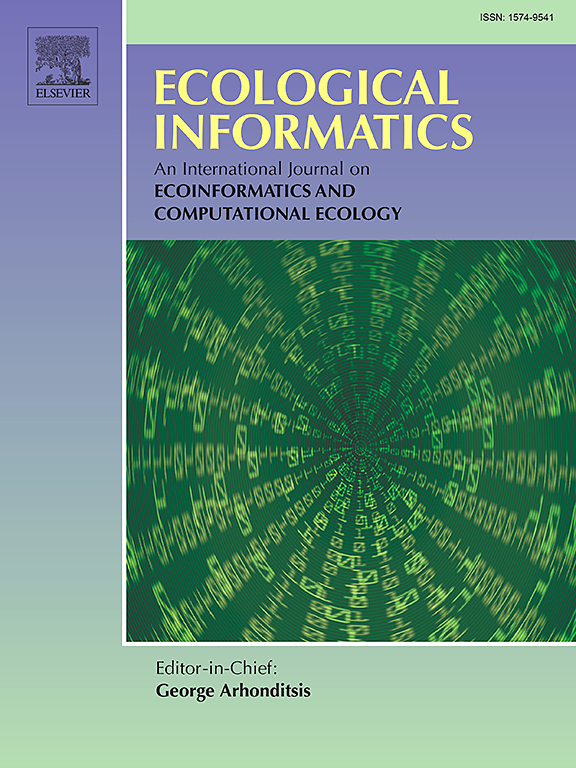基于遗传规划的螃蟹体重预测模型
IF 5.8
2区 环境科学与生态学
Q1 ECOLOGY
引用次数: 0
摘要
可靠的体重预测在商业交易和种群管理中具有重要作用。现有的研究通常使用预定义的模型来解释螃蟹的体重和长度之间的关系。本文提出了一种有效的回归方法,利用遗传规划(GP)建立可解释的模型,其中包含更多的特征,以探索螃蟹体重与身体特征之间的潜在关系。基于gp的方法已经在一个公开的螃蟹数据集上进行了评估。实验结果与几种预测两种螃蟹体重的基线方法进行了比较。在所有基线方法中,GP在测试集上的表现最好,预测螃蟹重量的决定系数为90.8%,预测螃蟹去壳重量的决定系数为81.3%。由于具有显式的特征选择能力,GP可以选择更重要的特征来提高预测性能。更重要的是,生成的模型可以提供潜在的可解释性,这对渔业管理和生态研究领域的专家来说特别有价值。本文章由计算机程序翻译,如有差异,请以英文原文为准。
Explainable models for predicting crab weight based on genetic programming
Reliable weight prediction plays an important role in commercial transactions and population management of crabs. Existing research usually used predefined models to explain the relationship between the weight and the length of crabs. In this paper, we propose an effective regression method using genetic programming (GP) to build explainable models, which include more features to explore potential relationships between the weight and the physical features of crabs. The GP-based method has been evaluated on a publicly available dataset of crabs. The experimental results were compared with several baseline methods for predicting two kinds of crab weights. GP shows the best performance among all the baseline methods on the test set, i.e., 90.8% for predicting the weight of crabs and 81.3% for predicting the shucked weight of crabs in terms of coefficient of determination. Thanks to the explicit ability of feature selection, GP can select more important features to improve the prediction performance. More importantly, the generated models can provide potential interpretability, which is particularly valuable for domain experts in fisheries management and ecological research.
求助全文
通过发布文献求助,成功后即可免费获取论文全文。
去求助
来源期刊

Ecological Informatics
环境科学-生态学
CiteScore
8.30
自引率
11.80%
发文量
346
审稿时长
46 days
期刊介绍:
The journal Ecological Informatics is devoted to the publication of high quality, peer-reviewed articles on all aspects of computational ecology, data science and biogeography. The scope of the journal takes into account the data-intensive nature of ecology, the growing capacity of information technology to access, harness and leverage complex data as well as the critical need for informing sustainable management in view of global environmental and climate change.
The nature of the journal is interdisciplinary at the crossover between ecology and informatics. It focuses on novel concepts and techniques for image- and genome-based monitoring and interpretation, sensor- and multimedia-based data acquisition, internet-based data archiving and sharing, data assimilation, modelling and prediction of ecological data.
 求助内容:
求助内容: 应助结果提醒方式:
应助结果提醒方式:


